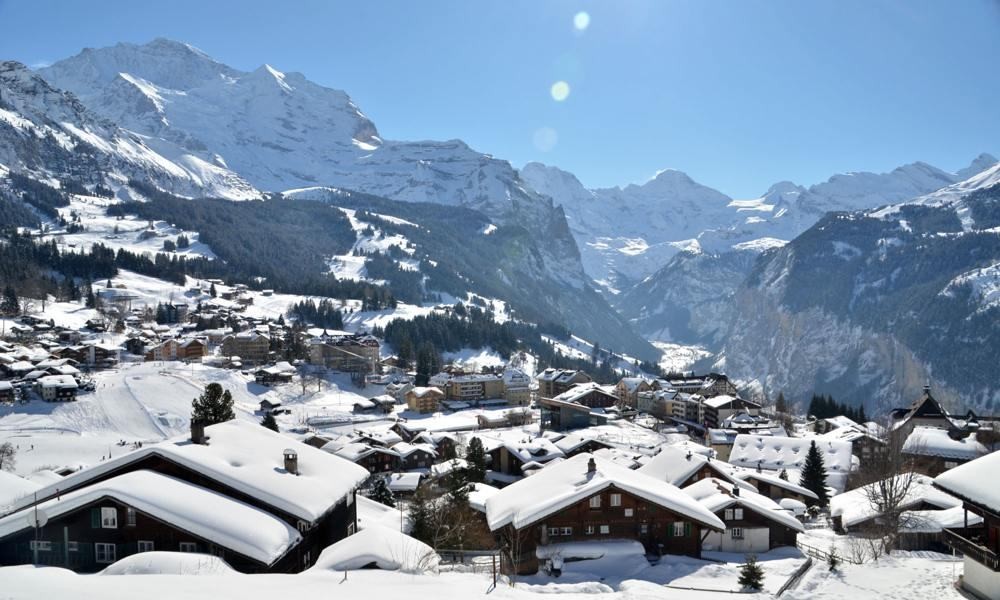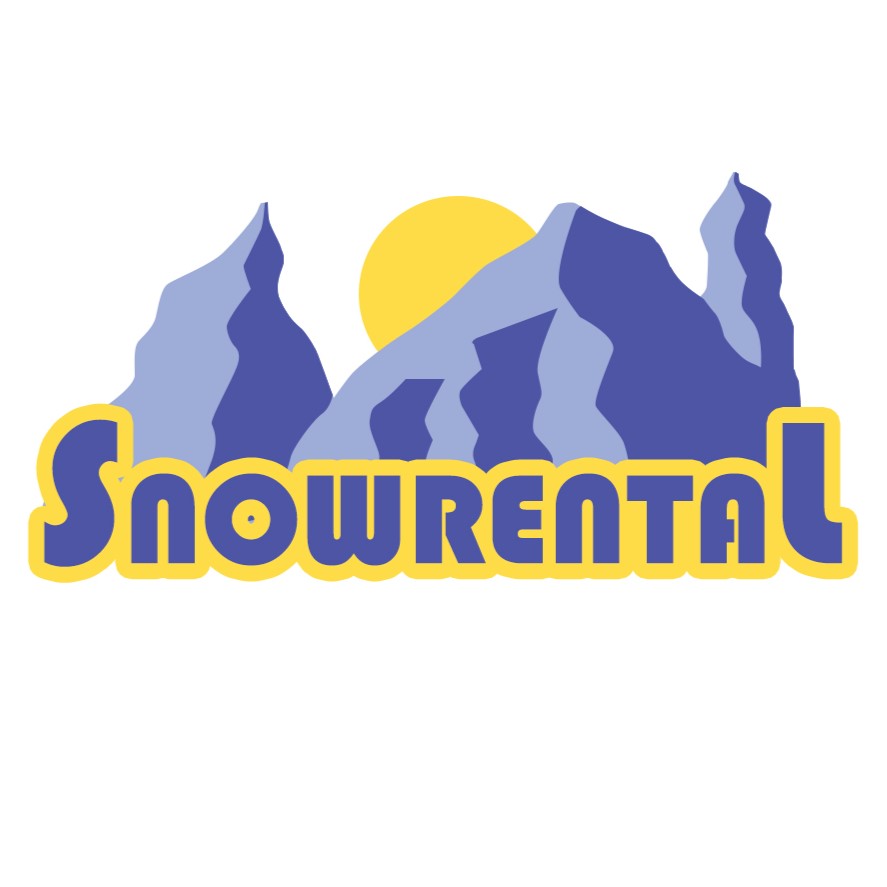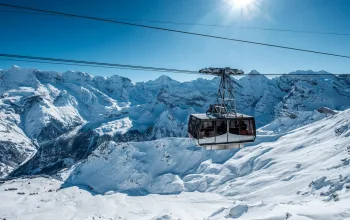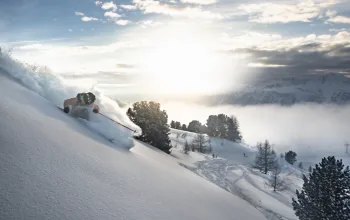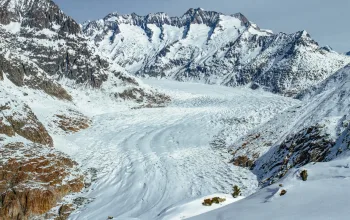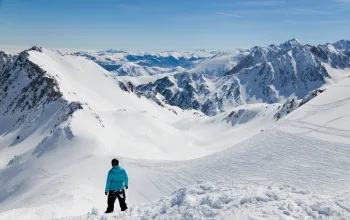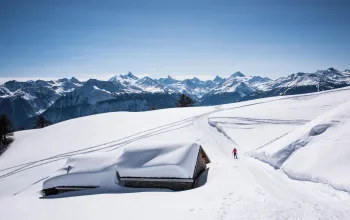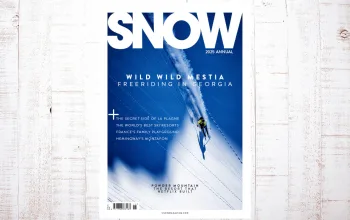Overview
The charming village of Wengen is perched on a wide natural balcony overlooking the Lauterbrunnen Valley in the heart of Switzerland's spectacular Jungfrau region, in the morning shadow of three of the most distinctive and famous peaks in the Alps: the Eiger, Monch, and Jungfrau.
Wengen's magical setting is further enhanced by the fact that the village is largely traffic-free, with only a few electric and public-service vehicles permitted; the primary transport link to/from the village is the Wengernalp railway, which also provides uplift to the upper slopes of Wengen's local Kleine Scheidegg-Mannlichen ski area.
This railway is also a key link with Wengen's history of development as one of the world's first ski resorts: it was pioneering British ski enthusiasts that first persuaded the railway company to continue running the line during the winter months, to provide uplift to the snow-covered mountain slopes above the village so that they could then ski downhill for fun; prior to that, recreational skiing and ski racing had consisted of Nordic-style activities where participants skied in a circuit or from point-to-point.
Alpine tourism and ski-sports pioneers Sir Henry Lunn and his son Arnold had helped to establish Wengen as a tourist destination in the first quarter of the 20th Century; Sir Henry had first brought members of his Public Schools Alpine Sports Club here, and Arnold Lunn subsequently helped develop the world's first slalom ski events here on the slopes of Wengen.
The resort is still an important venue for competitive snowsports, its fearsome Lauberhorn Downhill course is a classic challenge on the annual Alpine World Cup tour.
Ski area
Wengen's local Kleine Scheidegg-Mannlichen ski area is linked with the resort of Grindelwald that lies to the east in the neighbouring Lutschen Valley; Grindelwald is the traditional base camp for ascents of the North Face of the Eiger, which looms large above the runs on the eastern side of the ski domain.
Although based on the slopes of such a stern and notorious mountain, and best known for its fearsome Lauberhorn downhill course, Wengen's ski area is actually best suited to leisurely intermediate skiers.
Beginners start out on the open and often sunny plateau in the middle of the village, or are taken up to a compact beginners' area on the Wengernalp if snow conditions on the lower slopes are poor; the best progression routes out into the core ski area are then over towards Kleine Scheidegg, leading to an epic long blue run below the North Face of the Eiger and all the way down to the lowest point in the ski area, at the hamlet of Grund in the valley below Grindelwald.
Similarly great red runs are also possible from the summit sectors of the Lauberhorn and Mannlichen peaks, again all the way down to Grund. The only real on-piste challenges for more advanced visitors are the black runs from Eigergletscher station to Wixi, and of course the route of the Lauberhorn Downhill run; given the surroundings though, there's a fair amount of quite testing off-piste terrain too.
The Wengen-Grindelwald lift pass also covers the separate smaller First ski area on the far side of the Lutschen Valley, above Grindelwald; that sector is also well suited to leisurely intermediates and offers outstanding views back across the valley towards the Eiger and the Jungfrau group.
Off the slopes and apres ski
Wengen is very much a traditional Alpine resort village, with much to offer all its visitors, skiers and non-skiers alike, on and off the slopes. The village and the scenic wooded terrace it sits on are big enough to be interesting yet compact enough to retain a human scale; the surrounding scenery is on a massively grander scale though, drawing tourists from all over the world throughout the year.
The pedestrian-accessible Mannlichen cable car and Wengernalp railway mean that non-skiers can get out into the mountains and can easily arrange to meet up with skiing companions at many mountain bars and restaurants; the train connection at the Eigergletscher station for the astonishing ascent through the tunnels within the massifs of the Eiger and the Monch all the way to 'The Top of Europe' at the Jungfraujoch is worth the journey, offering a stupendous viewpoint with vistas over the protected Aletsch Glacier beyond the Jungfrau ridge, plus an interesting multi-media exhibition space, an ice palace, and even an Indian restaurant, all at an incredible 3,471m above sea level.
Down in the village, Victorian-era buildings and quaint traffic-free streets make Wengen a very pleasant place for a stroll; a nice selection of small shops, cafés, and restaurants line the short central 'high street', and there are a number of plush spas in which to be pampered.
Wengen mainly appeals to discerning middle-aged couples and families with young children, which is reflected in its range of attractions and amenities and in the style and ambiance of many of its bars and restaurants, but younger and young-minded visitors will also find plenty to entertain them.
Apres ski begins up on the slopes at a handful of animated venues, some with DJs and occasional live music; nightlife in the village is focused on cosy café-bars, chic lounges and a few lively joints such as Sina's and the Rocks, together with a couple of small nightclubs - the Blue Monkey Club in particular is a hip late-night venue.
Book Now
Bars and clubs
Falken Piano Bar
Pickel Bar
Rocks Bar
Sinas Pub
Hasenstall
Blue Monkey Club
Restaurants
Jack's Brasserie
Baren
Caprice
Pizzeria da Sina



